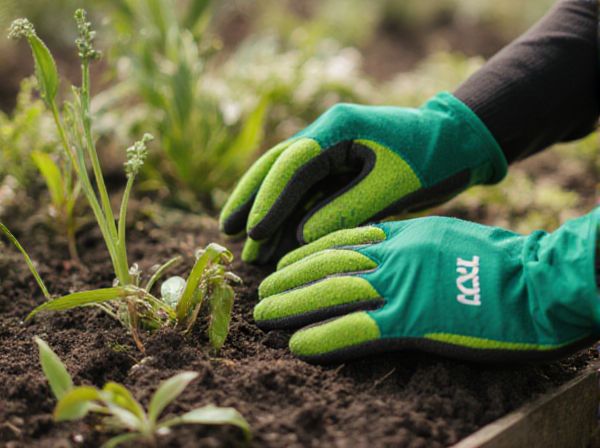
Alley cropping vs border planting Illustration
Alley cropping involves planting rows of trees or shrubs with crops grown in the alleys between, maximizing land use and enhancing biodiversity. Border planting places companion plants around the edges of garden plots or fields, providing pest control and microclimate benefits. Both techniques improve soil health and crop productivity but differ in spatial arrangement and scale.
Table of Comparison
| Feature | Alley Cropping | Border Planting |
|---|---|---|
| Definition | Planting rows of trees between crop alleys. | Planting trees or shrubs along field edges or borders. |
| Purpose | Enhances biodiversity, improves soil fertility, and provides shade. | Acts as windbreaks, reduces erosion, and supports beneficial insects. |
| Crop Interaction | Direct interaction; crops grow in alleys between trees. | Minimal interference; crops are adjacent to the border plants. |
| Space Utilization | Efficient use of space by integrating trees within crop fields. | Uses periphery space, does not reduce main crop area. |
| Soil Impact | Improves soil structure and nutrient cycling. | Prevents soil erosion and limits nutrient runoff. |
| Shade Impact | Provides partial shade which may affect sun-loving crops. | Minimal shade impact on main crops. |
| Benefits | Increases crop yield, supports timber and fruit production. | Protects crops from wind, enhances habitat for pollinators. |
Introduction to Alley Cropping and Border Planting
Alley cropping integrates rows of trees with crops grown in the alleys between, enhancing biodiversity and optimizing land use for improved soil health and increased crop yields. Border planting involves establishing tree or shrub rows around field edges, acting as windbreaks, pest barriers, and microclimate regulators that protect and support adjacent crops. Both agroforestry practices contribute to sustainable agriculture by promoting efficient resource utilization and ecological balance on the farm.
Key Differences Between Alley Cropping and Border Planting
Alley cropping involves planting rows of trees or shrubs with parallel alleys of crops grown between them, enhancing biodiversity and facilitating nutrient cycling within the same plot. Border planting refers to the cultivation of trees or hedges along the perimeter of agricultural fields, primarily serving as windbreaks and habitat for beneficial insects. Key differences include spatial arrangement, with alley cropping integrating trees and crops throughout the land, while border planting limits perennial vegetation to field edges, impacting light availability, root competition, and microclimate effects.
Benefits of Alley Cropping in Garden Design
Alley cropping enhances garden design by integrating rows of trees with crops, improving biodiversity and soil health through nitrogen fixation and organic matter input. This method increases space efficiency, allowing simultaneous production of timber or fruit alongside vegetables or herbs, maximizing yield per area. Improved microclimate regulation and erosion control further support sustainable growth and plant resilience within the garden environment.
Advantages of Border Planting Systems
Border planting systems enhance biodiversity by creating protective barriers that reduce pest invasion and improve microclimate stability. They optimize resource use through strategic placement along field edges, facilitating nutrient cycling and water retention while minimizing competition with main crops. This method supports pollinator habitats and increases overall crop resilience compared to alley cropping systems.
Best Plant Pairings for Alley Cropping
Best plant pairings for alley cropping include fast-growing trees like nitrogen-fixing acacias combined with shade-tolerant crops such as coffee or cocoa to improve soil fertility and crop yields. Maize or beans planted between rows of drought-resistant trees like leucaena provide effective soil stabilization and enhanced nutrient cycling. Integrating diverse species such as fruit trees with leguminous shrubs maximizes space efficiency and promotes sustainable agroforestry systems.
Ideal Species for Border Planting
Ideal species for border planting in companion planting include nitrogen-fixing plants such as clover and legumes that improve soil fertility, aromatic herbs like lavender and rosemary which repel pests, and flowering plants such as marigolds and nasturtiums that attract beneficial insects. These species create microclimates that protect main crops from wind and pests while enhancing biodiversity along field edges. Unlike alley cropping, border planting maximizes edge benefits without requiring space-intensive tree or shrub rows, making it suitable for smaller or irregularly shaped plots.
Soil Health and Fertility: Comparing Both Methods
Alley cropping enhances soil health by integrating nitrogen-fixing trees with crops, which enriches soil fertility and improves organic matter content. Border planting primarily serves as a protective barrier but offers limited direct benefits to soil structure and nutrient cycling. Research indicates alley cropping consistently promotes higher microbial activity and nutrient availability, resulting in sustained long-term soil productivity compared to border planting.
Pest and Weed Management Strategies
Alley cropping enhances pest and weed management by creating diverse microhabitats that disrupt pest life cycles and support beneficial predators, reducing reliance on chemical controls. Border planting establishes physical barriers that limit weed spread and attract natural pest enemies, fostering a more balanced and resilient ecosystem. Integrating alley cropping with targeted border planting optimizes pest suppression and weed control through complementary ecological mechanisms.
Compatibility with Home Gardens and Small Plots
Alley cropping offers a highly compatible solution for home gardens and small plots by integrating rows of trees with crops, maximizing space and enhancing biodiversity. Border planting suits smaller areas by allowing gardeners to create natural barriers or microclimates along plot edges without compromising core planting space. Both methods improve soil health and pest control, but alley cropping is ideal for optimizing productivity in limited urban gardens.
Choosing the Right Planting Technique for Your Garden
Alley cropping enhances biodiversity by integrating rows of trees with crops in between, optimizing space and soil health, while border planting focuses on planting specific species along garden edges to create natural barriers and attract beneficial insects. Selecting the right technique depends on garden size, desired ecological benefits, and crop compatibility; alley cropping suits larger gardens aiming for multifunctional yields, whereas border planting is ideal for smaller spaces seeking pest control and pollination support. Assessing soil conditions, plant species compatibility, and maintenance capacity is crucial to maximize growth and ecological balance.
Alley cropping vs border planting Infographic

 gardendif.com
gardendif.com